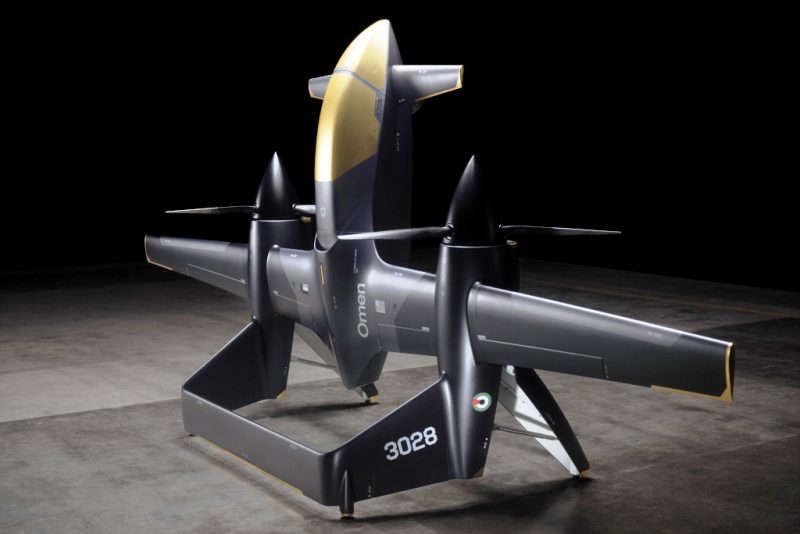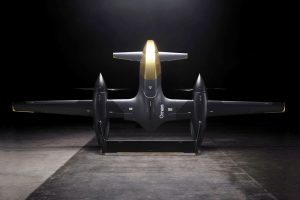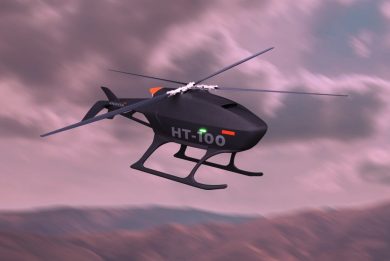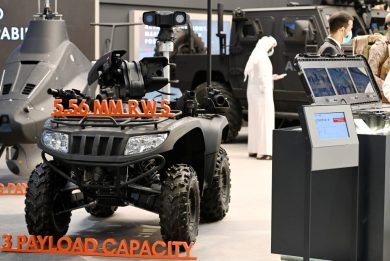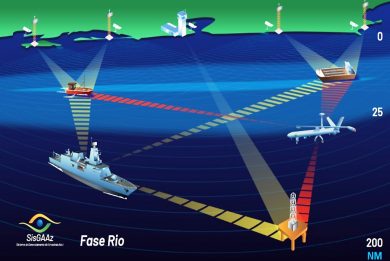EDGE and Anduril join forces to widen commercial footprint and develop next generation autonomous systems
EDGE, the United Arab Emirates defence champion, and Anduril, a US defence technology company specialized in autonomous systems based in Costa Mesa, California, announced the creation of a joint venture which aims at accelerating the design, development, and production of autonomous systems for the Middle East. The two companies also announced a new product
EDGE–Anduril Production Alliance, this will be the name of the joint-venture that will be based in the UAE and will allow the two companies to co-develop future products, “but will also provide our production basis in the UAE for development, for production and sustainment of these products,” Shane Arnott, the Senior Vice President at Anduril explained.
Anduril will therefor have a permanent presence in the UAE and in the Middle East at large. The California-based company is forming Anduril UAE and will create an over 4,500 m2 facility that will host a research and development and simulation centre, which will be the company regional hub for engineering, design, and prototyping. The virtual simulation centre will allow working with customers regionally allowing them to refine their requirements.
The joint venture leverages the longstanding relationship between the United States and the United Arab Emirates, Shane Arnott underlined, adding that both companies involved have similar approach in fielding modern autonomous systems quickly and at scale, and both have been willing in investing ahead of the needs. Moreover, products developed by the joint venture in the UAE might also be produced by Anduril in the United States, should some contracts be filed by US customers or other America-based entities.
Anduril is investing 900 million US dollars in the new Arsenal 1 facility aimed at mass producing drones in Pickaway County, Ohio, exploiting new technologies such as additive manufacturing and robotics.
Making public the new JV was only one of the announcements made by EDGE and Anduril: “Two of the most disruptive defence companies globally coming together with a shared ambition to co-develop an initial platform, which we’re going to announce,” Troy Lambeth, an SVP within EDGE supporting the President of the group cluster for platforms and systems, affirmed, adding that “we see a long skyline of expanding that relationship together in a number of exciting areas over time.”
Omen, this is the name of the new Group 3 unmanned air vehicle capable of vertical take-off and landing. Anduril set up a Manoeuvre Dominance team at its Costa Mesa HQ to lead the convergence of technical efforts in developing an advanced airborne VTOL platform, EDR On-Line understanding that Omen will be part of that effort.
“Omen is a tail sitter, a hover to cruise autonomous air vehicle in the Group 3 category. So, it takes off like a helicopter, and flies like an airplane,” Shane Arnott explains. Tail sitters proved to be quite critical in the past, the Anduril representative explaining that the key factor in making it successful was the powerplant, which is of the serial-hybrid type, no more details being provided for the time being [1]. Developing a propulsion system that can be optimised for both vertical and horizontal flight seems to be the key to Omen performances.
The Omen development started back in 2019, dozens of subscale models having been flown before coming to the actual full-scale demonstrator, which will become a product thanks to the cooperation with EDGE, which is injecting 200 million US dollars in the development, that will mature Omen to a full product by 2028, when production will start.
Underlining that no major breakthrough were made in the helicopter world in the past, the US-UAE JV aims at redefining vertical lift, “as it is going to carry payloads that are three to five times the payload carried by traditional Group 3 UAVs [2],” Arnott stated. The core of autonomy on the Omen will be provided by Anduril Lattice AI-powered software, capable of understanding situations, decide how to behave, an act accordingly, reducing to a minimum operators’ workload. Another key issue is the reduced logistics.
Flexibility is the buzz word; on one hand this is provided by the full independency from any type of runway, permitting to operate Omen independently and expeditionary, the payload capacity allowing carrying multiple payloads also adding in terms of flexibility. No indication on size and mass were provided, apart from mentioning it is around 3 metres tall (which should mean a wingspan slightly more than 7 metres), the only indication being that Omen positions itself in the high-end sector of Group 3 while until now most members of that group are in the low end of the spectrum. Another hint comes from the press release where the two companies say that “Its lightweight, foldable frame will allow a two-person team to transport, assemble, and launch the aircraft in minutes without specialised infrastructure.” As for range, EDR On-Line understood that Omen was designed with Indo-Pacific requirements in mind, especially in terms of range, allowing it to operate on wide water surfaces, providing it the ability to self-deploy at range, no numbers being mentioned.
Photos of what should be the demonstrator, released after the press conference, show a tail sitting airframe, with a long, tapered wing, a nacelle containing the electric motor driving a three-blade propeller being installed at around one third of each semi-wing. The fuselage is quite short and voluminous, to host a considerable payload, two short canard wings providing manoeuvrability and extra lift; an air intake is visible on the top rear of the fuselage, the engine part of the hybrid solution being installed at the rear of the fuselage, Anduril and Edge declining any further comment on which type of propulsor, ICE or turbine, is being used. At the back of the airframe, we find two vertical rudders linked by a horizontal plane; the lower part of the electric motors nacelles opens up when the Omen rotates into vertical position for landing, widening the footprint of the “landing gear”.
As said the payload capacity allows to carry multiple payloads such as synthetic aperture radars, electro-optic sensors, electronic warfare systems, up to systems that allow transforming the Omen into a special mission UAV, taking over that role from small biz jets often used in such role. Maritime patrol is another role that the two companies consider for their new UAV, a sonobuoy payload being envisaged as well as sensors such as a SAR. “We can start doing things that would normally take a Group 5 or potentially a small business jet,” Shane Arnott stated, EDR On-Line understanding that Omen will have considerable excess power that will allow carrying and operating power-hungry payloads.
A third announcement came during the press conference; the two companies announced that a first order for 50 Omen was signed by a UAE customer, no details if this is military or not being provided. This means that the new aircraft will be fully missionized and will enter service as part of this contract, which value is not considered in the 200 million invested by the UAE in the Omen programme.
Both the base airframe and the Lattice AI core are not military items, hence the Omen will be available for non-military missions, such as disaster relief, the military sensitive elements being concentrated into mission payloads. This will allow EDGE–Anduril Production Alliance to promote Omen into a much wider market.
Photos courtesy Anduril and EDGE
[1] On December 12th, 2024, Anduril and Archer announced an exclusive partnership to jointly develop a hybrid VTOL aircraft for critical defence applications targeting a potential program of record from the US DoD.
[2] According to US categorisation Group 3 UAVs have a maximum take-off mass between 30 and 600 kg, with a maximum speed of 250 knots

